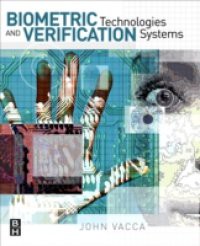Biometric Technologies and Verification Systems is organized into nine parts composed of 30 chapters, including an extensive glossary of biometric terms and acronyms. It discusses the current state-of-the-art in biometric verification/authentication, identification and system design principles. It also provides a step-by-step discussion of how biometrics works; how biometric data in human beings can be collected and analyzed in a number of ways; how biometrics are currently being used as a method of personal identification in which people are recognized by their own unique corporal or behavioral characteristics; and how to create detailed menus for designing a biometric verification system. Only biometrics verification/authentication is based on the identification of an intrinsic part of a human being. Tokens, such as smart cards, magnetic stripe cards, and physical keys can be lost, stolen, or duplicated. Passwords can be forgotten, shared, or unintentionally observed by a third party. Forgotten passwords and lost "smart cards" are a nuisance for users and an expensive time-waster for system administrators. Biometric security solutions offer some unique advantages for identifying and verifying/ authenticating human beings over more traditional security methods. This book will serve to identify the various security applications biometrics can play a highly secure and specific role in.* Contains elements such as Sidebars, Tips, Notes and URL links* Heavily illustrated with over 150 illustrations, screen captures, and photographs* Details the various biometric technologies and how they work while providing a discussion of the economics, privacy issues and challenges of implementing biometric security solutions

